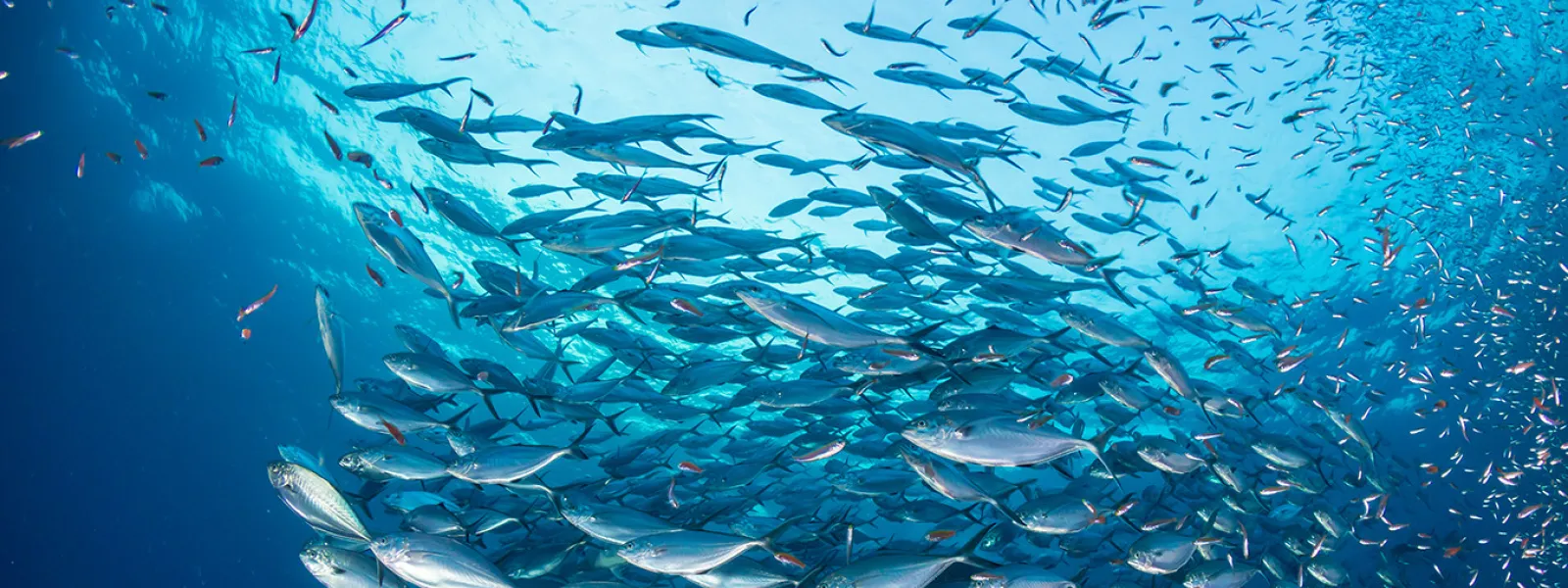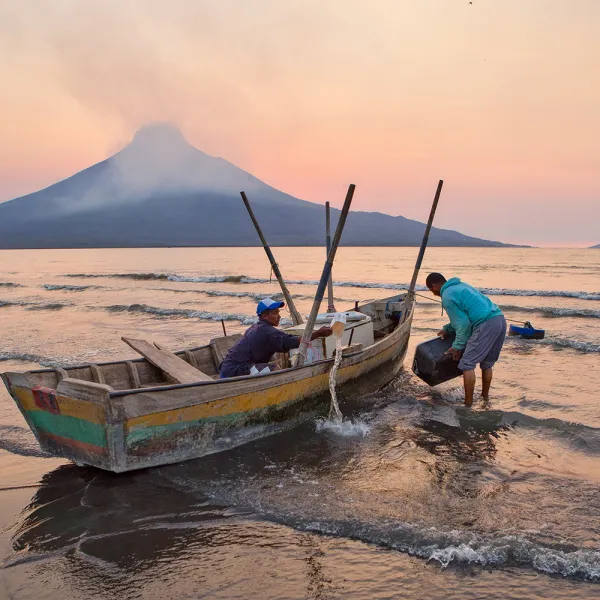
Project
ShutterstockTowards an end to subsidies that promote overfishing
Overfishing is one of the main problems for the health of our ocean. And the provision of negative subsidies to the fishing sector is one of the fundamental causes of overfishing.
Fishing subsidies are financial contributions, direct or indirect, that public entities grant to the industry.
Depending on their impacts, they can be beneficial when they promote the growth of fish stocks through conservation and fishery resource management tools. And they are considered negative or detrimental when they promote overfishing with support for, for example, increasing the catch capacity of a fishing fleet.
It is estimated that every year, governments spend approximately 22 billion dollars in negative subsidies to compensate costs for fuel, fishing gear and vessel improvements, among others.
Recent data show that, as a result of this support, 63% of fish stocks worldwide must be rebuilt and 34% are fished at "biologically unsustainable" levels.
Although negotiations on fisheries subsidies, within the framework of the World Trade Organization, officially began in 2001, it was not until the 2017 WTO Ministerial Conference that countries committed to taking action to reach an agreement.
This finally happened in June 2022, when member countries of the World Trade Organization reached, after more than two decades, a binding agreement to curb some harmful fisheries subsidies. It represents a fundamental step toward achieving the effective management of our fisheries resources, as well as toward ensuring global food security and the livelihoods of coastal communities.
The agreement reached at the 12th WTO Ministerial Conference provides for the creation of a global framework to reduce subsidies for illegal, unreported and unregulated fishing; subsidies for fishing overexploited stocks; and subsidies for vessels fishing on the unregulated high seas. It also includes measures aimed at greater transparency and accountability in the way governments support their fisheries sector.
The countries agreed to continue negotiating rules to curb other harmful subsidies, such as those that promote fishing in other countries' waters, overfishing and the overcapacity of a fleet to catch more fish than is sustainable.
If we want to have abundant and healthy fishery resources, it is time to change the way we have conceived fishing until now. We must focus our efforts on creating models of fishery use that allow for long-term conservation.
Partners:

Organization of American States questions Belo Monte Dam project
Human rights body of the OAS solicits official inquiry while Amazonian communities stage major protests. Altamira, Brazil - The Organization of American States (OAS) officially requested the Brazilian government to clarify information on the Belo Monte Dam’s licensing process, which moved forward without ensuring proper consultation with local indigenous groups. This request comes amid heightening local and international controversy around plans to construct the dam complex on the Xingu River in the Brazilian Amazon. The Inter-American Commission on Human Rights (IACHR) of the OAS, solicited the request in response to a complaint filed by several organizations including the Xingu Alive Forever Movement (MXVPS), the Inter-American Association for Environmental Defense (AIDA) and the Para Society for the Defense of Human Rights (SDDH), and supported by another 40 institutions advocating for the rights of indigenous and traditional communities of the Xingu River basin. The complaint demands that the Brazilian government immediately suspend the licensing process for the Belo Monte Dam, stop construction of the project, and guarantee the human rights of affected people and communities. The IACHR gave the government ten days to clarify the steps taken to ensure free, prior and informed consultations with local peoples and the legality of the dams "partial license," among other issues. The request is the first step in a longer proceeding in which local communities are alleging human rights violations stemming from the proposed dam. "When Brazil signs a treaty, it is obliged to comply with its resolutions," said Roberta Amanajás, a lawyer for the Para Society for the Defense of Human Rights (SDDH). "As a signatory to the Inter-American Convention on Human Rights, Brazil must recognize its legitimacy to examine cases such as Belo Monte." "With huge development projects like the Belo Monte Dam Complex, all governments must be held accountable for protecting human rights and the environment of local communities," said Jacob Kopas, a lawyer with AIDA. "The Inter-American Commission has already recognized this in other cases and has urged the suspension of a large dam project in Panama and as large gold mine in Guatemala." Meanwhile, hundreds of fisherman staged a protest on Friday in the city of Altamira to show their opposition to a project that could destroy their livelihoods by decimating the region's migratory fish species. The event, blessed by Dom Erwin Kräutler, Bishop of the Xingu and historic opponent of the hydroelectric plant, was marked by dozens of fishing boats setting out on the Xingu River to symbolize the importance of defending the river and preserving their way of life. "The fisherfolk of the Xingu are committed to organizing in defense of their river," said Kräutler. "From it they pull sustenance for themselves and their families, while their hard work supplies all of the cities along the Xingu. It was very powerful to see them set out in large numbers to fish last week. Their return today has shown that the river is alive and that they want to see it remain alive forever." Today, dozens more fishing boats from surrounding communities affected by the dam have joined the protesters in a show of solidarity, where they will greet the fishermen on their return and share their catch to mark the International Day of Action for Rivers.
Read moreLead Astray: What Happens when an American Company Offshores Pollution?
An article from Mother Jones magazine detailing the horrible effects of the Doe Run Peru smelter on the community of La Oroya.
Read morePublic Hearing on the Angostura Mine Suspended: AIDA Publishes Brief Urging the Colombian Government to Protect the Páramos (Spanish Text Only)
PARA PUBLICACION INMEDIATA CONTACTO: Natalia Jiménez, [email protected] Teléfono: (+57) 310-5734176 Suspendida audiencia pública del proyecto minero Angostura: AIDA publica su intervención en la que insta al Gobierno colombiano a proteger los páramos. Marzo 8 de 2011, Bogotá, Colombia – La audiencia pública programada para el viernes 4 de marzo en la ciudad de Bucaramanga (Departamento de Santander, Colombia) por el Ministerio de Ambiente, Vivienda y Desarrollo Territorial en el proceso de licenciamiento ambiental del proyecto de gran minería de oro a cielo abierto "Angostura" fue suspendida debido a situaciones que impidieron el normal desarrollo de la misma. Por esta razón, la Asociación Interamericana para la Defensa del Ambiente, AIDA hará llegar al gobierno colombiano su escrito de intervención sobre las obligaciones internacionales y constitucionales del Estado colombiano de proteger los páramos, que no pudo presentar en la suspendida audiencia. En los próximos días, el Ministerio de Ambiente, Vivienda y Desarrollo Territorial colombiano deberá pronunciarse sobre la cancelación total de la audiencia o sobre la posibilidad de reanudarla. Estaremos atentos a dicha notificación y nos aseguraremos de que los argumentos aportados por AIDA sean conocidos abiertamente y considerados dentro del proceso de solicitud de la Licencia Ambiental al proyecto Angostura. La misión de AIDA es fortalecer la capacidad de las personas para garantizar su derecho individual y colectivo a un ambiente sano por medio del desarrollo, aplicación y cumplimiento efectivo de la legislación nacional e internacional. La protección de agua dulce es una de nuestras líneas mediante la cual buscamos proteger el derecho al agua y asegurar recursos de agua dulce adecuados para las comunidades y los ecosistemas en las Américas AIDA, 426 17th Street, Oakland, CA 94612 T. (510) 550-6753, F. (510) 550-6740 AIDA Atlixco 138, Col. Condesa, México, DF, 06140, T/F (5255) 52120141 AIDA Diagonal 40 A No 14 – 75, Tel. (57 1) 3381277, Bogotá - Colombia AIDA Costa Rica, San Pedro c/o Centro de Derecho Ambiental y de los Recursos Naturales (CEDARENA) T. (506) 22837080 E-mail: [email protected], Website: www.aida-americas.org
Read more